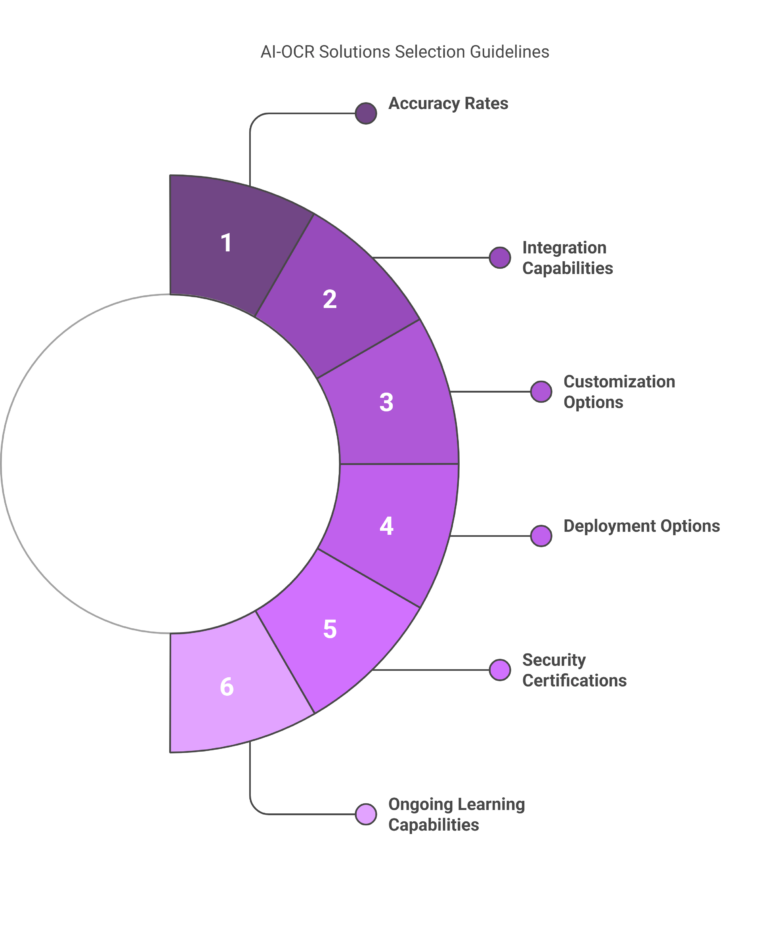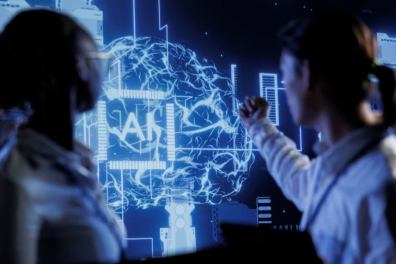Greetings! I'm Aneesh Sreedharan, CEO of 2Hats Logic Solutions. At 2Hats Logic Solutions, we are dedicated to providing technical expertise and resolving your concerns in the world of technology. Our blog page serves as a resource where we share insights and experiences, offering valuable perspectives on your queries.
Quick Summary
OCR technology has evolved significantly, making it accessible, accurate, and easy to implement. AI-powered OCR enhances accuracy, understands context, and integrates with various business systems. Whether for personal use or enterprise applications, choosing the right OCR solution depends on your needs, document volume, and integration requirements.
Are you drowning in paper documents while trying to embrace digital transformation? You’re not alone. Businesses waste countless hours manually transferring information from physical documents into digital systems.
This tedious process creates bottlenecks, introduces errors, and prevents your team from focusing on valuable work. Organizations implementing AI-powered OCR solutions report an increase in document processing efficiency and a reduction in operational costs related to data entry.
See how AI and OCR helped businesses automate their processes.
What is OCR?
OCR (Optical Character Recognition) technology converts images into editable text, bridging the gap between physical documents and digital information systems. But traditional OCR had significant limitations.
While basic OCR could only identify text under perfect conditions with standard fonts, AI has transformed this technology into something more powerful. Modern AI-OCR solutions analyze not just characters but context, meaning, and relationships between information.
Your smartphone’s ability to extract text from photos demonstrates basic OCR, but enterprise AI-OCR solutions take this capability to an entirely different level of intelligence and accuracy.
Pro Tip: Try using Google Lens or your iPhone’s Live Text feature to experience basic OCR in action, then imagine that capability enhanced 100-fold with enterprise AI solutions that can process thousands of documents simultaneously.
Measurable Business Impacts of AI-Powered OCR
The business case for AI-OCR implementation is compelling when you look at the numbers:
Efficiency Gains and Time Savings
Manual data entry consumes countless hours while introducing human errors into critical systems. AI-enhanced OCR reduces data entry time while simultaneously improving accuracy rates.
Your team’s productivity increases when AI-OCR handles routine document processing tasks. The technology learns document patterns specific to your business operations, becoming more efficient.
Accuracy Improvements and Error Reduction
Human data entry typically results in an error, which might seem small until you calculate the cost of these errors in financial documents or compliance records.
AI-OCR systems increase accuracy rates for most business documents, with continuous improvement through machine learning. The system gets smarter with each document it processes.
Cost-Benefit Analysis
The ROI timeline for AI-OCR implementation typically shows:
- Immediate savings in manual labor hours
- Mid-term improvements in process efficiency
- Long-term strategic advantages through data accessibility and business intelligence
Warning: Not all OCR solutions incorporate advanced AI capabilities despite marketing claims. Test any OCR system with your specific document types before committing to implementation.
AI-OCR Applications Across Industries
AI-powered OCR is revolutionizing workflows across virtually every industry that handles documents, which is to say, every industry.

Financial Services: Automated Document Processing
Banks and financial institutions process mountains of documents daily, from loan applications to compliance paperwork.
AI-OCR systems now automatically extract data from financial statements, verify information against databases, and route documents to appropriate departments.
Healthcare: Patient Records and Medical Documentation
Healthcare providers face unique challenges with handwritten notes, specialized terminology, and strict confidentiality requirements.
AI-OCR solutions designed for healthcare can now recognize medical terminology, decipher doctors’ handwriting, and automatically categorize patient information while maintaining HIPAA compliance.
Legal: Contract Analysis and Compliance
Law firms and legal departments leverage AI-OCR to transform contract review and discovery processes.
AI-enhanced OCR systems extract key clauses, identify potential legal issues, and compare language against approved templates.
Manufacturing: Supply Chain Documentation
Manufacturing operations involve complex documentation from purchase orders to quality certifications. AI-OCR streamlines the entire supply chain by automatically processing shipping manifests, bills of lading, customs forms, and supplier documentation.
Inventory management becomes near real-time when all documentation feeds directly into ERP systems without manual intervention.
Retail and E-commerce: Inventory and Customer Experiences
Retailers use AI-OCR to streamline inventory processing, automatically update product information, and enhance customer experiences.
E-commerce operations implement AI-OCR to standardize product listings across multiple platforms, with the system extracting and formatting product details to meet different marketplace requirements.
Loyalty programs employ OCR to scan physical receipts for points and reward processing, bridging online and offline purchase experiences.
Ready to discover how AI-OCR can transform your industry’s specific workflow?
Advanced AI-OCR Capabilities Transforming Business
AI has elevated OCR from simple text recognition to intelligent document processing through several key capabilities:
Context Understanding and Intelligent Extraction
AI now helps OCR understand context, making sense of entire documents rather than isolated words. The system determines relationships between different information elements, identifying which numbers represent dates, amounts, or account information.
Modern AI-OCR categorizes documents automatically based on content patterns, distinguishing between invoices, receipts, and contracts without human intervention.
Multi-language and Handwriting Recognition
Handwriting recognition remained a significant challenge for traditional OCR systems for decades. AI-powered neural networks can decipher doctors’ notes, handwritten forms, and hastily written memos.
Global businesses benefit from multi-language recognition that processes documents in dozens of languages without requiring separate systems or settings.
Processing Complex or Poor-Quality Documents
AI image preprocessing separates text from complex backgrounds before OCR processing begins, solving the limitation of traditional systems.
Advanced algorithms compensate for faded text, coffee stains, wrinkled pages, and poor image quality, making previously inaccessible archive documents valuable again.
Integration with Business Intelligence Systems
The true power of AI-OCR emerges when extracted data feeds directly into business intelligence and analytics platforms.
Decision-making improves dramatically when all document data becomes part of the analytics ecosystem, revealing patterns and opportunities hidden in previously inaccessible information.
Practical Implementation: Challenges, Solutions, and Getting Started
Implementing AI-OCR successfully requires careful planning and execution:
Common Integration Challenges
Legacy system integration often presents the biggest hurdle for AI-OCR implementation. Businesses with established document workflows need solutions that complement rather than disrupt existing processes.
Employee adoption can stall without proper training and change management. Teams accustomed to manual processing need to understand how to work with and trust the new technology.
Data privacy and security concerns must be addressed, particularly for businesses in regulated industries handling sensitive information.
For customized solutions that complement your business
Assessment of Business Needs
Start by mapping your document workflows and identifying bottlenecks. Where does paper slow down your processes? Which departments spend the most time on manual data entry?
Quantify the current costs of document processing, including labor hours, error correction, compliance issues, and opportunity costs of delayed information.
Pro Tips: Prioritize use cases based on potential ROI, typically starting with high-volume, standardized documents like invoices or forms.
Solution Selection Guidance
Evaluate AI-OCR solutions based on:

- Accuracy rates with your specific document types
- Integration capabilities with your existing systems
- Customization options for your industry requirements
- Cloud vs. on-premises deployment options
- Security and compliance certifications
- Ongoing learning capabilities
Request proof-of-concept testing with your actual documents rather than vendor samples.
Best Practices and Measuring Success
Implement in phases rather than attempting enterprise-wide deployment immediately. Start with a single department or document type to prove value.
Establish clear metrics before implementation, including document processing time, accuracy rates, labor costs, and customer response times, to measure improvements.
Create feedback loops where employees can report issues and suggest improvements to the AI-OCR system.
Warning: AI-OCR implementation often reveals inefficiencies in existing document processes. Be prepared to redesign workflows rather than simply digitizing broken processes.
Conclusion
AI-powered OCR isn’t just keeping pace in the AI era, it’s driving business transformation by connecting physical documents to digital workflows and analytics.
At 2Hats Logic, we specialize in tailored OCR and AI solutions to streamline your document processes. Our expertise spans various industries, ensuring seamless integration and optimized workflows for your business.
FAQ
Is OCR difficult to implement?
No, modern OCR solutions are user-friendly and easy to set up. Cloud-based OCR tools require minimal setup, while enterprise solutions may need some integration with existing systems.
Do I need technical knowledge to use OCR?
Not necessarily. Many OCR tools offer intuitive interfaces, drag-and-drop functionality, and automatic text recognition, making them accessible to non-technical users.
How accurate is modern OCR technology?
OCR accuracy depends on the quality of the document and the technology used. AI-powered OCR improves accuracy by learning from data, handling poor-quality scans, handwriting, and multilingual text.
Can OCR work with my existing systems?
Yes, most advanced OCR solutions integrate seamlessly with document management systems, ERP, CRM, and other business applications through APIs or built-in connectors.

Related Articles







